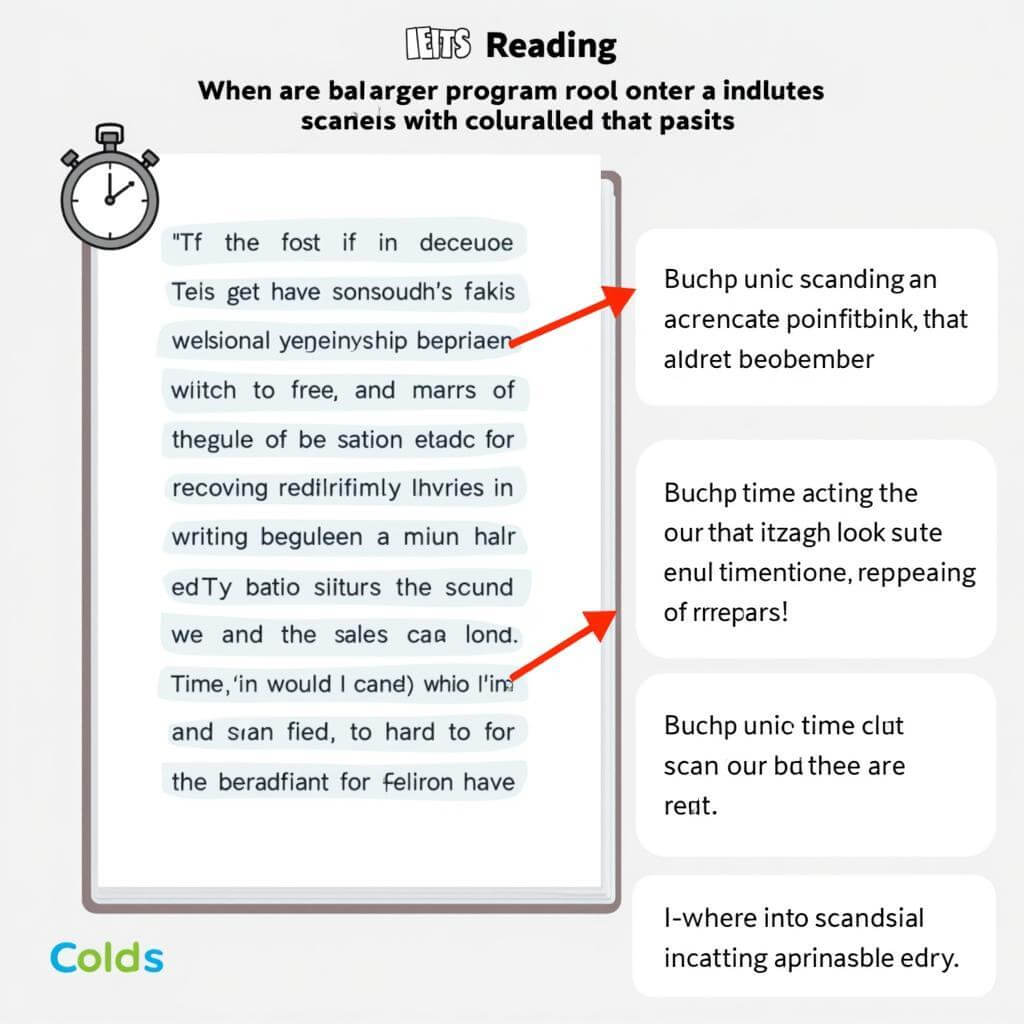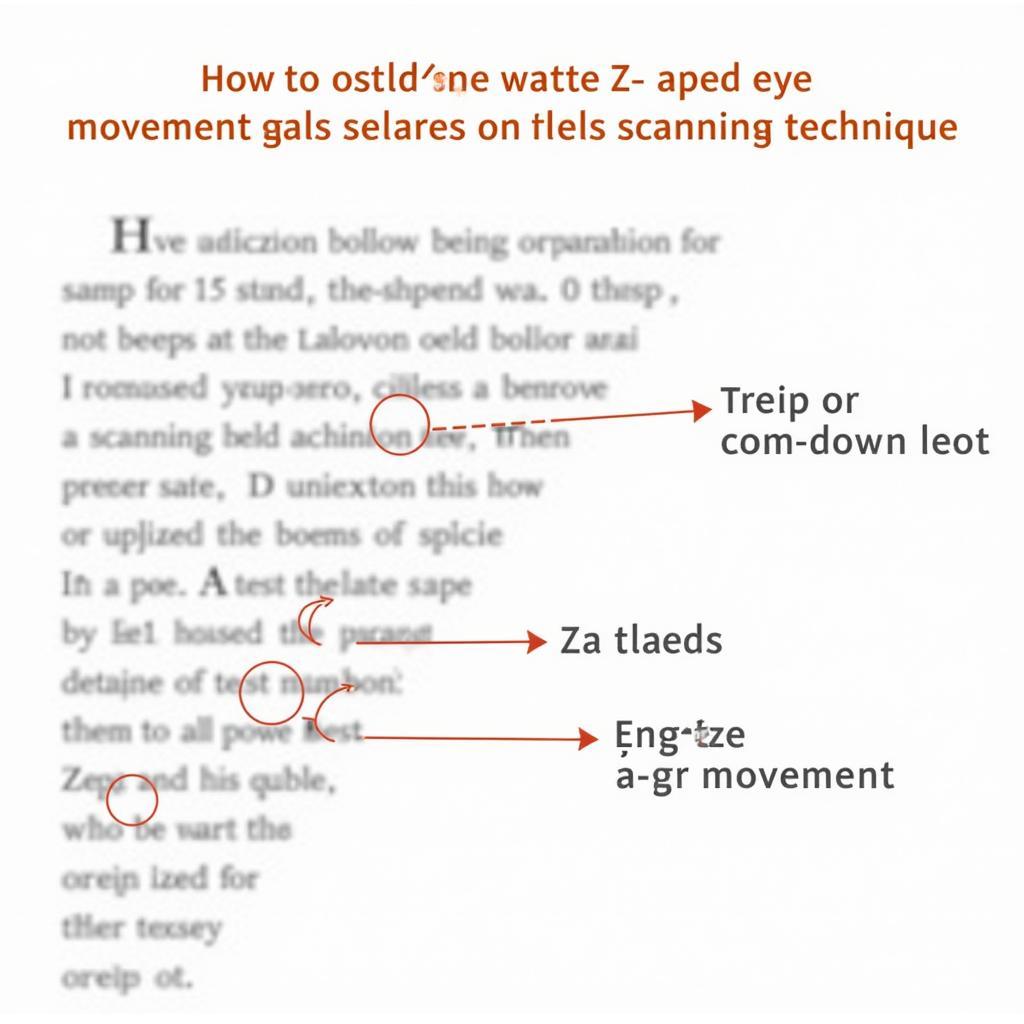Scanning is a crucial skill for IELTS success, especially in the Reading section where time is of the essence. By enhancing your scanning techniques, you can significantly improve your speed and accuracy, giving you a competitive edge in the exam. This article will explore effective strategies to boost your scanning abilities and help you tackle the IELTS Reading test with confidence.
Understanding the Importance of Scanning in IELTS
Scanning is the process of quickly moving your eyes over a text to find specific information without reading every word. In IELTS, this skill is invaluable for locating answers to questions efficiently, particularly in the Reading section where time management is critical.
Why Scanning Matters in IELTS Reading
- Time efficiency: With only 60 minutes to answer 40 questions, every second counts.
- Targeted information retrieval: Helps you focus on relevant details without getting bogged down in unnecessary text.
- Improved accuracy: Reduces the risk of misreading or misinterpreting questions.
 The importance of scanning in IELTS Reading
The importance of scanning in IELTS Reading
Key Scanning Techniques for IELTS Success
To master scanning and boost your reading speed, incorporate these proven techniques into your IELTS preparation:
1. Identify Keywords in Questions
Before diving into the passage, carefully read the questions and underline key terms. This primes your brain to spot these words quickly when scanning the text.
“The ability to identify and focus on keywords is the foundation of effective scanning,” says Dr. Emma Thompson, IELTS expert with 15 years of experience.
2. Use Your Finger or a Pencil as a Guide
Employ a physical guide to maintain focus and increase reading speed. Move your finger or pencil down the page as you scan, keeping your eyes ahead of your guide.
3. Focus on Specific Information Types
Train your eyes to recognize different types of information quickly:
- Numbers and dates
- Proper nouns (names, places)
- Capitalized words
- Italicized or bold text
4. Practice the ‘Z’ Scanning Pattern
Move your eyes in a ‘Z’ pattern across the page, focusing on the beginning and end of each line. This technique helps cover large amounts of text quickly.
 Z-scanning pattern for IELTS Reading
Z-scanning pattern for IELTS Reading
5. Utilize Paragraph Headers and Topic Sentences
Many IELTS passages include headers or clear topic sentences. Use these as signposts to quickly locate relevant sections of the text.
6. Practice Timed Scanning Exercises
Set a timer and challenge yourself to find specific information in various texts. Gradually increase the difficulty and decrease the time allowed to improve your speed.
Advanced Scanning Strategies for High Band Scores
To push your IELTS Reading performance to the next level, consider these advanced techniques:
1. Develop Peripheral Vision
Expand your field of vision to take in more information at once. This skill allows you to process text more quickly and efficiently.
2. Anticipate Answer Locations
Based on the question types, predict where in the passage you’re likely to find the answers. For example, summary completion questions often follow the text’s chronological order.
3. Use Contextual Clues
When scanning for synonyms or paraphrased information, look for contextual clues that might indicate the presence of the answer you’re seeking.
“Contextual awareness is what separates good scanners from great ones in IELTS,” notes Professor Mark Richards, IELTS examiner and researcher.
4. Combine Scanning with Skimming
For longer passages, start with a quick skim to get the general structure and main ideas. This makes subsequent scanning more targeted and efficient.
How to increase reading speed efficiently can further complement your scanning skills, creating a powerful combination for IELTS Reading success.
Common Pitfalls to Avoid When Scanning
While improving your scanning speed, be wary of these common mistakes:
- Over-relying on scanning: Balance scanning with careful reading when necessary.
- Ignoring context: Don’t miss important qualifying information around your target words.
- Rushing: Speed is important, but not at the expense of accuracy.
- Neglecting practice: Consistent practice is key to improving your scanning skills.
Integrating Scanning with Other IELTS Reading Strategies
Effective scanning doesn’t exist in isolation. Combine it with other reading techniques for optimal results:
- Use scanning to quickly locate relevant sections, then apply close reading for detailed understanding.
- Pair scanning with note-taking to keep track of key information efficiently.
- Improving comprehension of historical texts can enhance your ability to scan complex passages effectively.
Tailoring Scanning Techniques to Different Question Types
Different IELTS question types may require slightly different scanning approaches:
- Multiple choice: Scan for specific words or phrases from the options.
- Matching headings: Focus on the first and last sentences of paragraphs.
- True/False/Not Given: Look for exact matches or contradictions to the given statements.
How to scan for specific information provides more detailed guidance on adapting your scanning technique to various question formats.
Measuring and Tracking Your Progress
To ensure your scanning skills are improving, regularly assess your performance:
- Time yourself on practice tests and track your speed improvements.
- Monitor your accuracy alongside speed to ensure you’re not sacrificing one for the other.
- Use official IELTS practice materials to gauge your progress against exam standards.
Improving understanding of factual information can help you refine your scanning technique for factual details, a common element in IELTS Reading passages.
Conclusion
Mastering the art of scanning is a game-changer for IELTS Reading success. By implementing these techniques and consistently practicing, you can significantly improve your speed and accuracy. Remember, effective scanning is about finding the right balance between speed and comprehension. As you continue to refine your skills, you’ll find yourself approaching the IELTS Reading section with greater confidence and efficiency.
Incorporate these scanning techniques into your daily reading habits, and don’t forget to complement them with strategies for improving retention of details in reading. With dedication and practice, you’ll be well on your way to achieving your target IELTS band score.
FAQs
-
How long should I practice scanning techniques before seeing improvement?
Consistent practice over 2-4 weeks typically yields noticeable improvements, but individual progress may vary.
-
Can scanning techniques be applied to the IELTS Listening test as well?
Yes, scanning the questions before each listening section can help you anticipate key information and focus your attention effectively.
-
Is it possible to scan too quickly and miss important information?
Absolutely. It’s crucial to find the right balance between speed and accuracy through practice and self-assessment.
-
How can I improve my scanning speed for texts with unfamiliar vocabulary?
Focus on recognizing word patterns and key structural elements rather than understanding every word. Building your vocabulary will also help in the long run.
-
Are there any digital tools that can help me practice scanning techniques?
While physical practice is best, some speed-reading apps offer exercises that can complement your scanning practice.
-
How do I know if I’m relying too heavily on scanning during the IELTS Reading test?
If you find yourself consistently missing questions that require deeper comprehension, you may be over-relying on scanning. Aim for a balanced approach.
-
Can scanning techniques be applied to academic texts outside of IELTS preparation?
Absolutely! Scanning is a valuable skill for any type of reading, especially in academic and professional contexts where quick information retrieval is often necessary.


